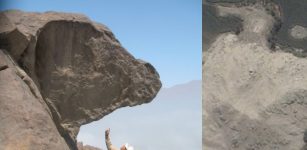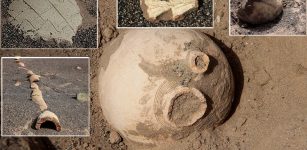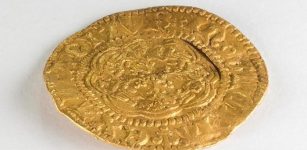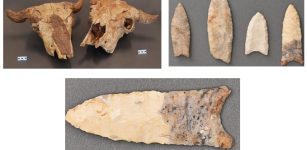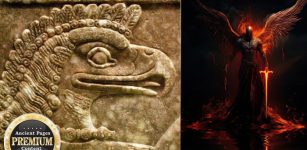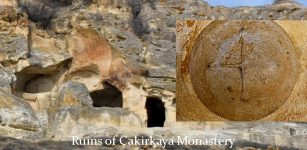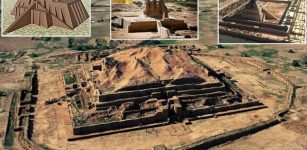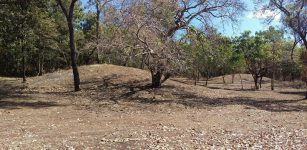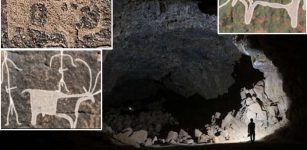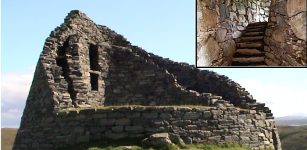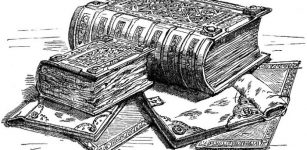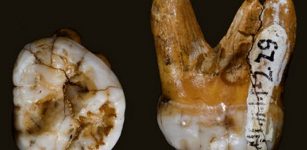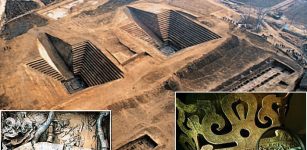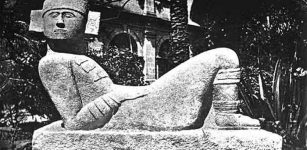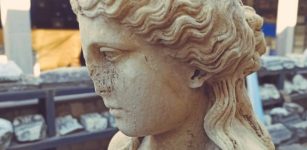Legacy Of Queen Hatshepsut’s Temple In Luxor – New Valuable Finds Announced
Conny Waters - AncientPages.com - Several discoveries near Luxor including ancient rock-cut tombs and burial shafts from 3, 600 years ago have been announced by a joint Egyptian archaeological mission led by the Zahi Hawass Foundation for Antiquities and Heritage and by the Supreme Council of Antiquities.
Recently unearthed artifacts by the mission of Zahi Hawass Foundation for Antiquities & Heritage on display at the causeway of Queen Hatshepsut's Funerary temple at Deir al-Bahri on the Nile's West Bank, in Luxor, Egypt, Wednesday, Jan. 8, 2025. Credit: AP Photo/Khaled Elfiqi
The mission’s findings significantly enhance our comprehension of Egypt's 18th Dynasty and the Hyksos period. Furthermore, they offer invaluable insights into the transition from Egypt's Middle Kingdom to the illustrious era of the 18th Dynasty, elucidating the influence of the Hyksos period on ancient Egyptian history.
Mohamed Ismail Khaled, Secretary-General of the Supreme Council of Antiquities (SCA), has highlighted the importance of this discovery due to its strategic location in Luxor and its connection to Queen Hatshepsut. This marks the first major archaeological breakthrough of 2025. Khaled emphasized that this achievement results from three years of dedicated effort by researchers and archaeologists.
He also added that inscribed blocks depicting Queen Hatshepsut and King Thutmose III, are an important discoveries of this season.
"These remarkable blocks retain their vivid colours and offer a glimpse into the artistry of the period." The artifacts will be displayed at the Egyptian Museum in Tahrir.
Renowned Egyptologist Zahi Hawass announced the discovery of arrowheads likely used in battles against the Hyksos and numerous coffins from the 17th Dynasty. Among them was the coffin of "Djehuty Mes," supervisor of Queen Tetisher, King Ahmose's grandmother, who helped liberate Egypt from the Hyksos.
"Despite the owner's high status, the tomb's relative modesty reflects the economic challenges Egypt faced at the time due to prolonged wars against the Hyksos", Hawass noted, and suggested the discovery indicates Queen Tetisheri lived until the ninth year of King Ahmose's reign and that Kings Kamose and Ahmose's tombs might be nearby.
No doubt, the discovery is the first significant royal find on Luxor's west bank since the discovery of Tutankhamun's tomb, marking a milestone in studying ancient Egyptian history.
According to Tarek El Awady, deputy director of the Egyptian archaeological mission, the discoveries encompass the foundational remnants of Queen Hatshepsut's Valley Temple, which historically functioned as the majestic entrance to her funerary complex.
Additionally, over 1,000 intricately adorned blocks and fragments have been uncovered, featuring rare bas-reliefs and inscriptions that exemplify the artistic excellence during the reigns of Hatshepsut and her successor, Thutmose III. Further findings include more than 100 limestone and quartzite tablets bearing Queen Hatshepsut's cartouches, along with a singular tablet identifying Senmut, her esteemed architect.
El Awady highlighted that the intact foundation deposits, unparalleled since Herbert L. Winlock's excavations a century ago, provide crucial insights into the temple's construction and the legacy of the queen.
The mission also uncovered Middle Kingdom rock-cut tombs that predate the 18th Dynasty. Furthermore, older necropolises were found beneath Hatshepsut's temple. Despite being looted, these sites yielded artefacts like pottery, offering tables, and models of bread, wine, and meat, which shed light on the burial practices of that period.
Intact "Rishi coffins" including one with a child's remains bound with ropes, are additional discovery, and nearby was also unearthed a well-preserved mat and a woven wooden bed from the 17th to 18th Dynasties, reflecting necropolis guards' roles during Egypt's liberation struggles against the Hyksos.
The team found parts of a Ptolemaic necropolis built over Hatshepsut's structures in Assasif, with artefacts like bronze coins of Alexander the Great, children's toys, funerary masks, and scarabs. The mission is analyzing and preserving these artefacts for Egypt's historical narrative and future exhibitions.
Written by Conny Waters - AncientPages.com Staff Writer


